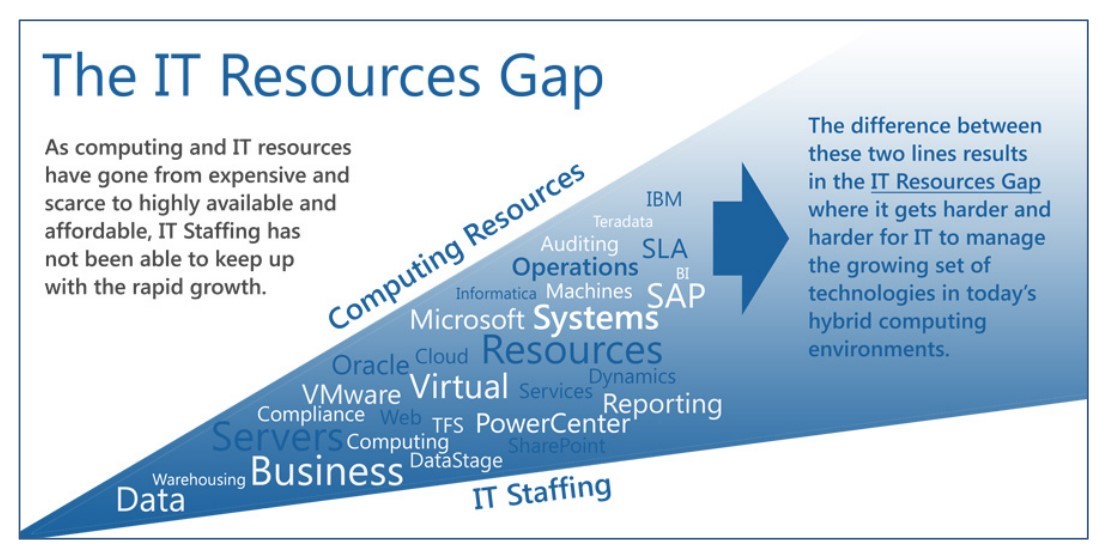Addressing Complexity and the IT Resources Gap
IT staffing has remained the same, despite the exponential growth in computing resources, creating an IT Resources Gap and burdensome complexities.

IT is Complex and Lacking Resources
In a very short amount of time, computing resources have gone from very expensive and scarce to highly available and affordable. The number of different applications, technologies, and platforms in the modern IT environment has grown significantly as a result of the accelerating set of business requirements, digitalization, and more, but despite this exponential growth in computing resources, IT staffing has not kept pace. The need for IT people continues to expand and finding experienced IT people with the right skill set is harder than ever. The difference between the number of computing resources and IT staffing has resulted in a critical IT Resources Gap.
You can see examples of this Resources Gap occurring every day. IT positions like Big Data Scientist and Chief Automation Officer, that didn’t exist 10 years ago are becoming a necessary role in IT departments. In the UK alone, KPMB’s recent Report on Jobs found that the demand to fill permanent jobs in UK’s IT market had risen to 64.4 percent in August, up from 62.8 percent just a month earlier. And according to the latest trends from Gartner VP & Fellow Dave Aron’s 2016 CIO Agenda at this year’s Gartner Symposium/ITxpo, 66% of CIOs believe talent scarcity is reaching crisis proportions.

A Case of Automation Over-Tooling
In order to combat this resources gap, organizations continue to look to multiple scheduling solutions in order to solve the complexity, but this results in silos of automation with escalating license and support costs.
According to Gartner, most organizations implement workload automation solutions as silos, with the majority of large organizations employing between 3 and 8 automation solutions in their IT environment.
The problem with this approach is that it further compounds the resources gap, introducing more technologies that continually need additional oversight and people resources to manage, spreading precious IT resources too thin over too many tools.
The Solution: Consolidating your Approach
In order to really adapt to the changing needs of the business, IT organizations must take an architectural approach to automation, consolidating various tools and point solutions, and adopting a unified job scheduling and workload automation strategy. Taking an architectural approach leads to greater agility because a single solution is more flexible and easier to scale, rather than having to scale multiple different solutions that all need to work together despite various requirements.
However, the key to consolidating your approach is finding a modern workload automation or job scheduling solution with the key requirements to support today’s complex business and IT environments.
Check out our post on the 10 Key Requirements for Workload Automation Software for an overview of the essential components of a modern automation solution.








